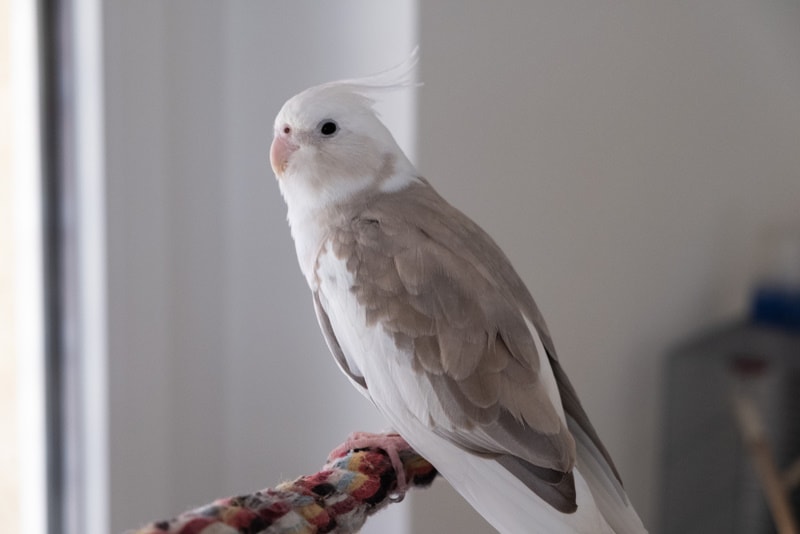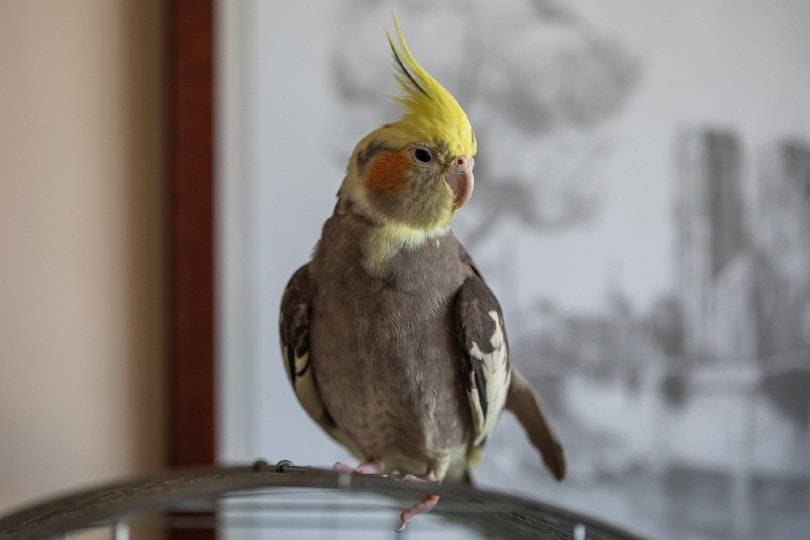How to Trim a Cockatiel’s Nails: Vet-Approved Step by Step Guide
Updated on
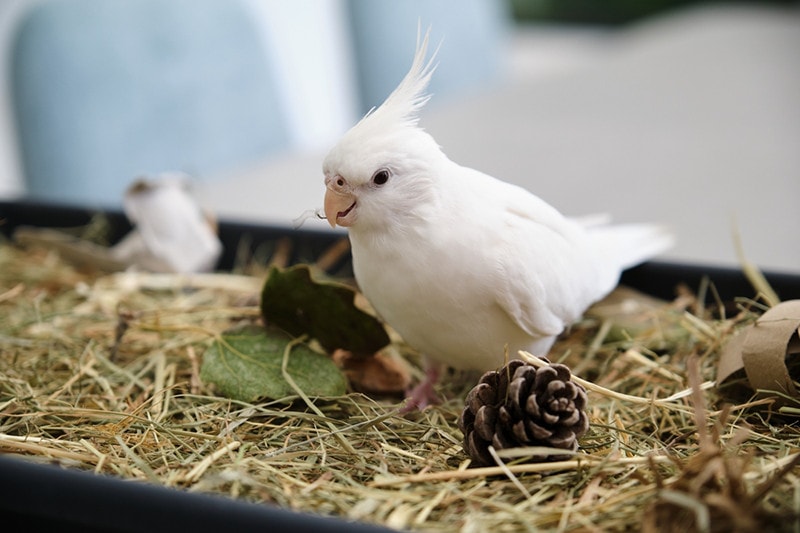
You don’t have to be around a cockatiel long before you realize why it’s the second most popular pet bird. They’re sweet animals and a joy to own. However, raising one comes with a responsibility. Pet cockatiels may at times need help with having their nails trimmed.
We can understand a pet owner’s reluctance. No one wants to get bit. Holding a bird still while you try to trim their nails won’t go over well with some cockatiels, and they’ll make their displeasure known. However, our list of a step by step guide can help make this task easier for both you and your avian companion.
The 16 Steps to Trim a Cockatiel’s Nails
1. Interact With Your Pet Daily To Build Trust
This bit of advice goes a long way toward anything you must do for your cockatiel, whether it’s cleaning out the cage, bathing them, or trimming their nails. Daily interaction will help forge a bond between you two. That’ll come in handy when you need to settle down an angry bird. They’ll find your voice reassuring if you’ve taken the time to build trust with one another.
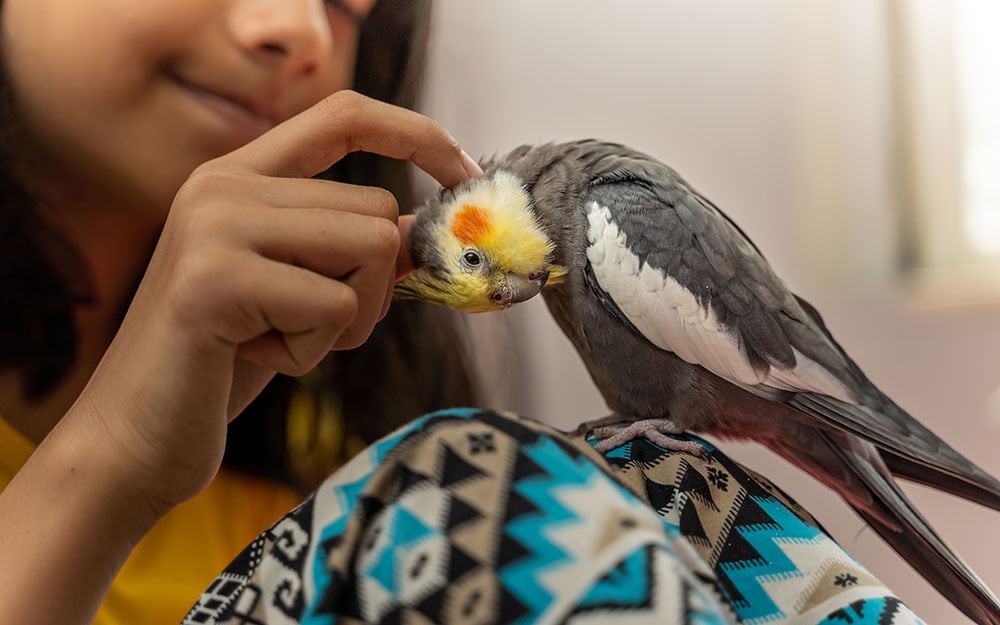
2. Have the Right Tools for the Job
It’s essential to have everything laid out and ready to use before getting your cockatiel out of their cage. They’re probably not going to like being held, so do your bird and yourself a favor and make the task short and sweet. You’ll need a towel, styptic powder, clippers, a light source, and a friend to help. Opt for a quiet room to minimize distractions that could stress your pet even more.
3. Have Styptic Powder Handy
The styptic powder will stop bleeding if you hit the bird’s quick or blood vein. If this happens, it will bleed—a lot. However, this powder works well and will get things under control in a jiffy. Of course, you don’t want it to happen, but it’s worth mentioning that the powder may sting a bit. We suggest trying to keep your cockatiel calm by talking to it in a soothing tone.
4. Get Your Cockatiels Used to Seeing & Feeling Your Grooming Towel
Using a towel to trim your cockatiel’s nails is a no-brainer. It’s not just in case of accidents, but it’ll also give you better control of your bird during the action. We suggest letting your pet see and feel the towel before you attempt to trim their nails. To do this, drape the towel over your forearm or shoulders (depending on where your bird likes to sit when interacting with you) so that they get used to the texture of the towel on their feet.
While it’s tempting to grab a thick towel, we recommend something lighter so that you can get a better hold of your bird. However, make sure the towel doesn’t have loose threads, your bird’s nails can snag on loose strings.
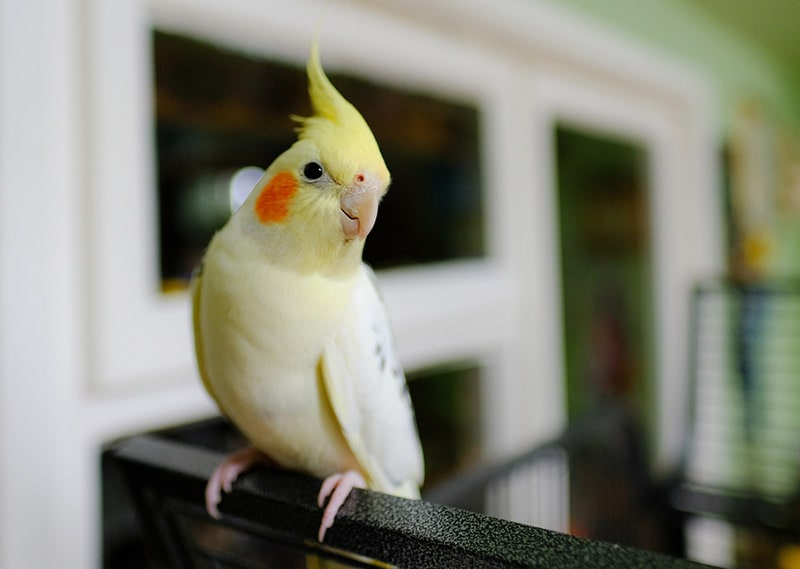
5. Use the Right Clippers
The essential thing is control. Accidents often happen when pet owners use a tool that is unwieldy, like a product meant for dogs or cats. You don’t need something that big to get the job done. You can even use a pair of human nail clippers. Many think they’re easier to use than a small pair of pet scissors.
6. Keep a Light or Your Smartphone Nearby to Locate the Blood Vein (Optional)
Each nail has a blood vessel running through it. It tends to recede if a bird wears it down naturally or if you trim your cockatiel’s nails regularly. It’s also easier to spot if your pet’s nails are light as opposed to dark colored. You can use a handheld light or even your smartphone to determine where the quick ends before you cut. You might even consider marking the spot with a marker.
7. Wrap Your Cockatiel In The Towel
It’s best to have a friend assist with this part. Wrap your cockatiel in the towel by draping it over your pet’s wings. Do not apply pressure onto their chest, and ensure that their head and feet aren’t covered by the towel. Gently grab your bird by their sides with one hand, your thumb should be on one side of their head and your index finger on the other side.
8. Allow Your Cockatiel To Grip Your Finger
Bring an index finger near your bird’s foot and let your cockatiel grasp your finger properly, this means that two of their toes should be grasping your finger in one direction (forward) and the other two should be grasping your finger in the opposite direction.
9. Lift a Nail Gently With Your Thumb
Use your thumb to lift up one of your bird’s nails.
10. Identify The Quick
Identify the quick in your bird’s nail by either shining a light on their nail or visualizing it in a well-lit room. You do NOT want to cut the quick as you trim the nail.
11. Cut the Nail at an Angle Toward Your Cockatiel’s Foot
The correct angle of the cut replicates the natural wear that would occur with a wild bird. You should aim for about a 45-degree angle. Do not trim the nail straight across or upwards. A misshapen nail could interfere with your pet’s walking or grasping abilities. It’s also easier to keep the quick in your line of sight this way. It’s best to just cut the tip of the nail.

12. Release The Nail & Check For Bleeding
Once the nail has been trimmed, gently release it from your thumb. Ensure the nail isn’t bleeding, and allow your parrot to grasp your finger again.
If the nail is bleeding, apply styptic powder to the nail immediately and take your cockatiel to the vet. Nail bleeding shouldn’t be taken lightly in cockatiels, and you should immediately seek veterinary attention for your cockatiel if a nail bleeds. Don’t bother trimming the other nails if you notice one bleeding, the accident would likely leave your cockatiel too stressed – your vet can trim the other nails for you.
13. Repeat Steps 9 – 12 For Each Nail
Repeat the process on each nail until all of the nails on your parrot’s feet have been trimmed.
14. Stop if Your Bird Is Stressing Out Too Much
Signs of stress include screaming, panting, attempting to bite, and dilated pupils. If your cockatiel is acting really upset, don’t force the issue. Speak calmly to your pet to help settle them down and put them back in their cage. Don’t be offended if they don’t want anything to do with you for a while. Birds vary in how they handle traumatic situations. Have your vet trim your cockatiel’s nails if you simply cannot do so.
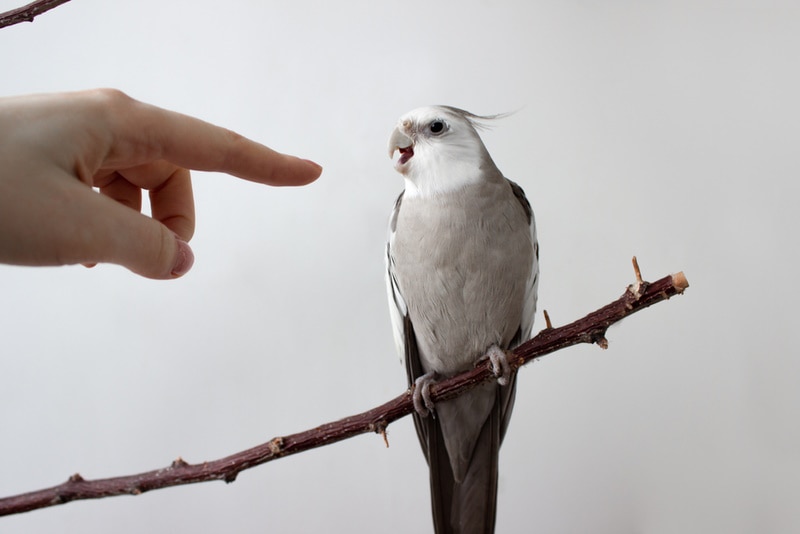
15. Add Lots of Textured Surfaces and Perches to Your Bird’s Cage
This tip is directed toward minimizing how often you must trim your cockatiel’s nails. Remember that, in the wild, they’re foraging around the ground, looking for something to eat. The chances are the soil is mixed with something rough, like sand. The large particle size is like a natural file, trimming the bird’s nails. You can replicate that situation with textured surfaces, perches, or even pedicure branches.
16. Don’t Forget the Treats
Cockatiels, like other parrots, are intelligent creatures. They learn to make associations between experiences, both good and bad. Your goal is to make nail trimming a positive thing for your pet. Nothing will make a better impression than a yummy treat. You may even find that your bird fights less and puts up with the minor inconvenience.
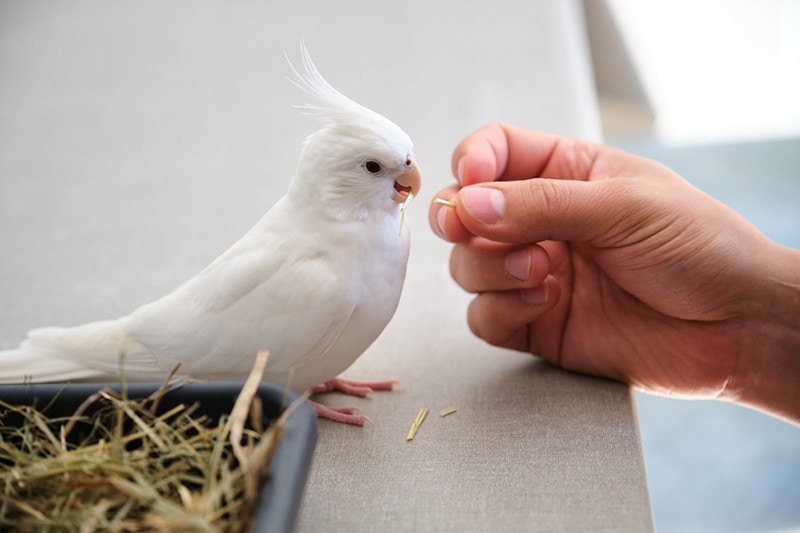
Conclusion
Trimming your cockatiel’s nails is a necessary part of pet grooming. Wild birds keep them in check by filing them on the surfaces on which they walk. Unless you deck out your cockatiel’s cage to replicate their natural habitat, you have another task on your hands. Fortunately, trimming their nails isn’t all that difficult, especially if you have a good relationship with your pet. Your calming voice will reassure them and make it infinitely easier.
- Related Read: How to Bathe a Cockatiel: 5 Easy to Follow Tips
Featured Image Credit: Ladanifer, Shutterstock


